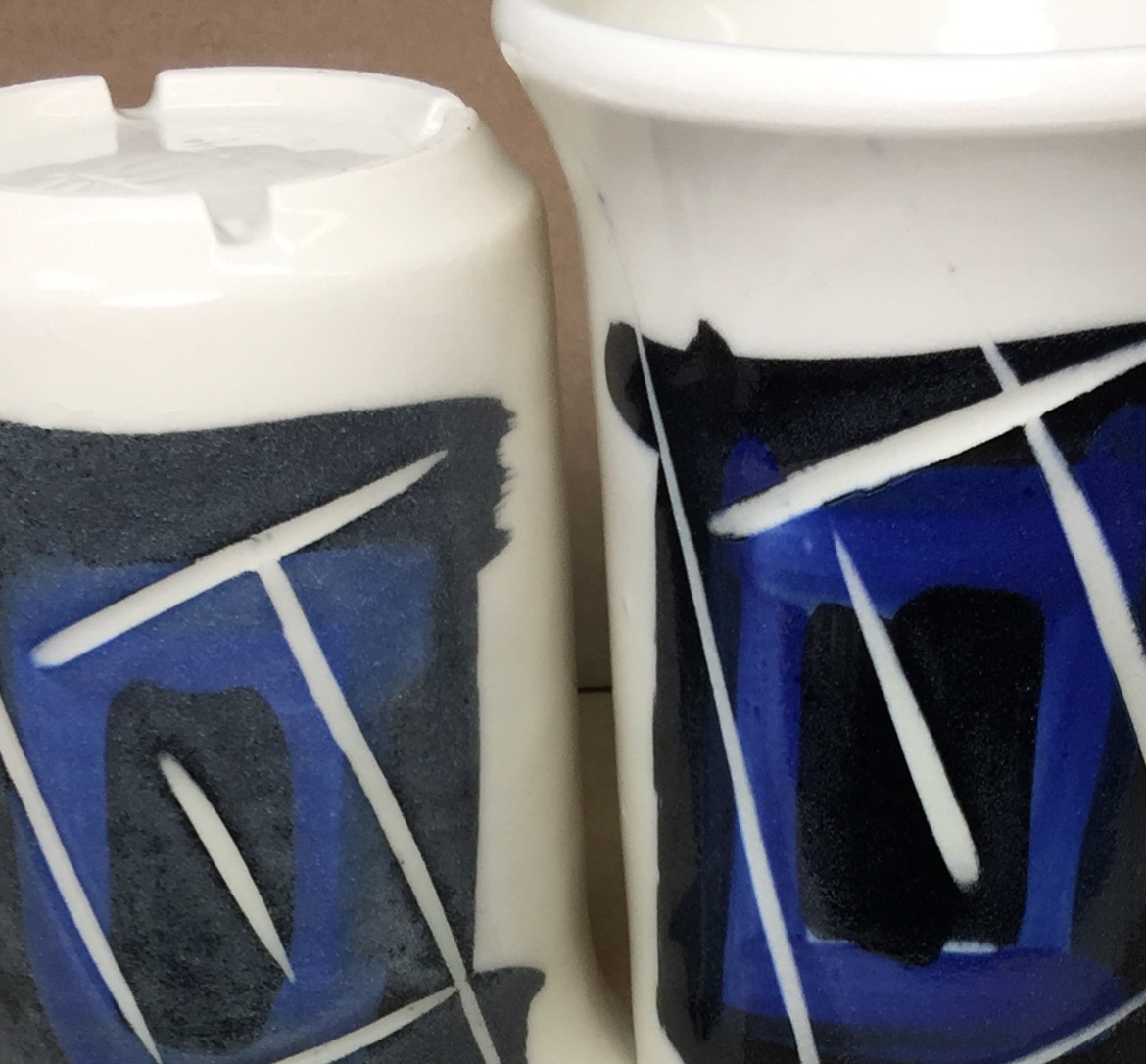Underglazes require a fluid melt transparent But extra melt fluidity comes at a cost
These porcelain mugs were decorated with the same insight-live.com/url/3409">Amaco Velvet underglazes (applied at leather hard), then bisque fired, dipped in clear glaze and fired to cone 6 (using a drop-and-hold schedule). While the G2926B clear glaze (left) is normally a great glossy transparent for general use, its melt fluidity is not enough to clear the micro-bubble clouds that dull the colors below (while these bubbles are a product of the LOI of body and glaze, underglaze colors can really generate them too). However, the G3806C recipe (right) has a more fluid melt that better enables bubble escape. But such glazes have downsides. The melt fluidity requires care not to get it too thick (or it will run). Its high flux content means it is not as durable. And, its high KNaO content raises the thermal expansion (COE) considerably (and thus the danger of crazing). This porcelain has a high enough COE to fit this, but this glaze crazes on others (that's why I always use the G2926B on the insides of ware). To get even better transparency a thinner layer could be applied (by mixing it as a brushing glaze).
Pages that reference this post in the Digitalfire Reference Library:
G3806C - Cone 6 Clear Fluid-Melt transparent glaze, Transparent over-glaze for cone 6 stoneware Is a good one even possible on brush decorated ware?, Underglaze, Transparent Glazes, Glaze Bubbles

This post is one of thousands found in the Digitalfire Reference Database. Most are part of a timeline maintained by Tony Hansen. You can search that timeline on the home page of digitalfire.com.
